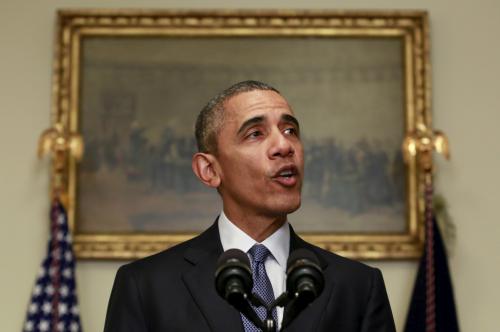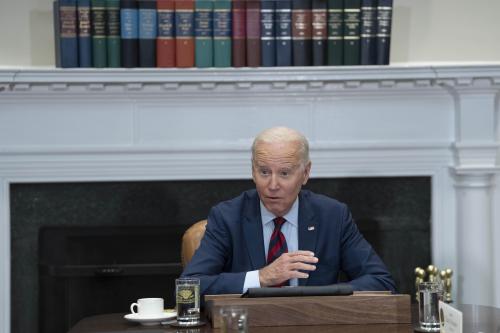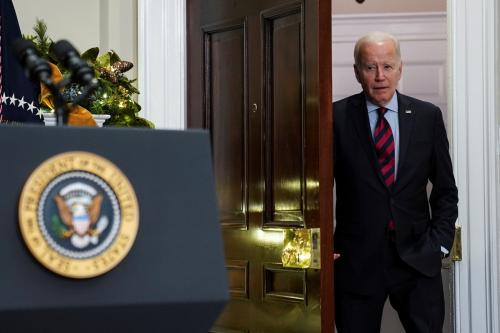Data reported here come from the Federal Judicial Center’s Biographical Directory of Article III Federal Judges, the Administrative Office of the U.S. Courts’ compilations on judicial vacancies and historic judgeship numbers, and the author’s own data sets.
Judicial confirmations go on vacation during the Senate’s August recess, but are likely to resume with a vengeance in September. What’s the shape of the Trump administration’s judicial appointments program at this point?
Basically, the administration and Senate have:
- seated a record number of court of appeals (circuit) judges, although changes in the appellate courts’ party-of-appointing-president balance have been less than one might expect given the number of appointments;
- given relatively short shrift to the confirmation of district judges; that may change at least temporarily, given the current paucity of circuit vacancies;
- as a percentage of total judgeships, appointed fewer judges than three recent predecessors and about the same as three others;
- turned mainly to white males as judicial appointees.
For perspective, Table 1 shows the gradual and uneven decline in confirmation rates since Reagan and the more obvious increase in the time it has taken the Senate to move nominations to confirmation.
Table 1: Total Nominations and Confirmations
| Court of Appeals | District Court | |||||||
| Noms | Conf | Rate | Median days | Noms | Conf | Rate | Median days | |
| Reagan | 94 | 83 | 88% | 45 | 306 | 290 | 95% | 41 |
| Bush1 | 53 | 42 | 79% | 83 | 190 | 148 | 78% | 92 |
| Clinton | 89 | 66 | 74% | 139 | 347 | 305 | 88% | 99 |
| Bush 2 | 84 | 60 | 71% | 219 | 285 | 261 | 92% | 142 |
| Obama | 68 | 55 | 81% | 229 | 323 | 268 | 83% | 215 |
|
Trump (Aug. ‘19) |
46 |
43 |
93% |
151 |
141 |
99 |
70% |
271 |
Note: This table counts Roger Gregory (CA-4) as a Clinton, not a Bush2, appointee.
Confirmation rates in George H.W. Bush’s first two years (1989-90) were over 90%. The December 1990 judgeship bill created a large number of vacancies and nominations, but the Democratic Senate, perhaps with an eye on the 1992 presidential election, confirmed a lower percentage than during the first two years.
The Trump-McConnell confirmation juggernaut has clearly prized circuit over district confirmations—note the greater confirmation rate (93% to 70%) and much shorter time from nomination to confirmation (151 median days to 271). Indeed, Trump’s circuit confirmation numbers, in slightly more than two-and-a-half years, compare favorably to those of his predecessors’ full-term numbers: more appointments (43) than one-term George H. W. Bush (42) and close to Obama’s two-term confirmations (55).
Table 2 compares these same Trump’s numbers (i.e., at the third-year August break) with those of his predecessors at the same point in their presidencies. It shows the same primary attention to filling appellate vacancies. Trump has outpaced his predecessors as to the number of circuit nominations and confirmations, and the Senate has processed the nominations much faster than it did those of his two predecessors. With the 13 district confirmations just before the August break, Trump ranks third among the six most recent presidents.
Table 2: Nominations and Confirmations at Third-Year August Break
| CA noms | CA conf | Rate | Median days | DC noms | DC conf | Rate | Median days | |
| Reagan | 24 | 21 | 88% | 26 | 87 | 84 | 97% | 31 |
| Bush1 | 33 | 26 | 79% | 75 | 100 | 66 | 66% | 65 |
| Clinton | 31 | 26 | 84% | 99 | 154 | 135 | 88% | 79 |
| Bush 2 | 44 | 26 | 59% | 260 | 150 | 117 | 78% | 119 |
| Obama | 32 | 19 | 59% | 249 | 119 | 74 | 62% | 184 |
| Trump | 46 | 43 | 93% | 151 | 141 | 99 | 70% | 271 |
The Senate turned its attention to district judges because there are almost no circuit vacancies to fill—one nominee is pending for the Fifth Circuit’s court of appeals and three nominee-less vacancies remain in the courts of the Second and Ninth circuits.
District vacancies, now at 97, have hovered around 100 for Trump’s entire term. The focus on seating circuit judges may satisfy those who relish those courts’ policy-making role but is cold comfort to civil litigants who can’t get their cases heard in the federal district courts, given the high number of vacant judgeships and criminal cases’ statutory priority. For one example, until the pre-recess confirmation surge, the then-nine district court vacancies in Texas constituted 18 percent of that state’s district judgeships and had been vacant for 486 median days.
An aside: in riffing to a group of young supporters in July, Trump seemed to imply that he alone inherited vacancies (“Because, normally, when you become President, you go in and you say ‘Do I have any judges to appoint?” ‘No’.”) In fact, as Table 3 shows, he inherited more vacancies than any of his recent predecessors except Clinton, who reaped the benefit of unfilled judgeships created by the large December 1990 judgeship bill.
Table 3: Vacancies on January 1
| District | Court of Appeals | Total | |
| 2017 | 86 | 17 | 103 |
| 2009 | 40 | 13 | 53 |
| 2001 | 54 | 26 | 80 |
| 1993 | 90 | 17 | 107 |
Trump benefitted, not from a judgeship bill, but from the Senate’s 2015-2016 unprecedented slow-walking of confirmations. It refused to let Obama fill more than a handful of district vacancies, but it let many vacant district judgeships sit untouched as it concentrated on circuit confirmations.
Reshaping the Court of Appeals
Has the large number of Trump circuit appointees produced big changes in the party-of-appointing-president balance on those courts? Yes and no.
In the aggregate, the percentages have certainly changed. On Inauguration Day 2017, Republican appointees constituted 41 percent of all 179 judgeship and 45% of judges in active status. They now constitute 52 percent of authorized judgeships and 53 percent of active-status judges.
Table 4: Court of Appeals by Party of Appointing President
| January 2017 | July 2019 | |||||
| R app’tees | D app’tees | Vacant | R app’tees | D app’tees | Vacant | |
| J’ships | 41% | 50% | 9% | 52% | 46% | 2% |
| Active J’s | 45% | 55% | – | 53% | 47% | – |
Those changes would have been greater, though, had Trump been able to replace more Democratic appointees with Republican appointees. In fact, 60 percent of his appointees filled seats previously occupied by Republican appointees. (Of course, judges in general and appointees of any political party in particular are not fungible. Trump’s circuit appointees appear on the whole more conservative than the Republican appointees they replaced and certainly younger as well.)
Furthermore, his appointments were disproportionately made to courts that already had Republican appointee majorities. The 55 judgeships in the courts of appeals of the Fifth, Sixth, Seventh, and Eighth circuits constitute 31 percent of the 179 circuit judgeships, but Trump’s 19 appointees to those courts are 44 percent of his 43 circuit appointees to date. When he took office those four courts were the only ones with Republican appointee majorities. By August 2019, only the Third Circuit’s court of appeals had joined them. It had seven D-appointees and five R-appointees on Inauguration Day, with two vacancies. Today it has six –D-appointees and-eight R-appointees. When Trump fills the two vacancies on the Second Circuit’s court of appeals, that court will go from seven-D-appointees and four R-appointees (and two vacancies) on Inauguration Day, to six D and seven-R appointees. But with only two other vacancies nationwide (one on the solidly R-appointee Fifth Circuit court, the other on the still D-appointee dominated Ninth), no other switches are in the immediate offing.
On the other hand, the balances on eight courts have seen no more than a two-judge switch (e.g., the Fourth Circuit’s court of appeals was 10 D-appointees and five R-appointees on Inauguration Day. The balance is now nine-six). The eight courts with basically the same balance are those of the D-appointee-majority First, Fourth, Tenth, DC and Federal circuits, and the R-appointee-majority Fifth, Sixth, and Eighth circuits. The Seventh Circuit’s court of appeals went from a six R-appointee, three D-appointee majority (with two vacancies) to a nine-two R to D appointee balance.
Number of appointments/percentage of judgeships
Trump often says that he has appointed more circuit judges at this point than any of his predecessors, and he’s correct. His 43 appointments, as Table 5 shows, leave his predecessors in the dust.
But his frequent boasts as on July 23 to a conservative youth group about all his appointees— “percentage-wise, I blow everybody away except” George Washington—clearly are not true even as to recent presidents.
Table 5: Appointees as of Mid-August, Third Year*
| Court of Appeals | District Courts | All | |||||||||
|
SCt s |
Number |
% auth. J’ships |
Number |
% auth. J’ships |
Number |
% auth. J’ships | |||||
| Kennedy | 2 | 22 | 25% | 98 | 32% | 122 | 30% | ||||
| Nixon | 2 | 31 | 28% | 98 | 24% | 131 | 25% | ||||
| Clinton | 2 | 26 | 15% | 137 | 21% | 165 | 20% | ||||
| Trump | 2 | 43 | 24% | 101 | 15% | 146 | 17% | ||||
| Bush 2** | 0 | 26 | 15% | 118 | 17% | 144 | 16% | ||||
| Carter | 0 | 28 | 19% | 82 | 16% | 110 | 16% | ||||
| Reagan | 1 | 21 | 15% | 85 | 16% | 107 | 16% | ||||
| Bush 1 | 1 | 26 | 15% | 67 | 10% | 94 | 11% | ||||
| Obama | 2 | 19 | 11% | 74 | 11% | 95 | 11% | ||||
*Includes the Court of Appeals for the Federal Circuit and the Court of International Trade and predecessors
** Counts Roger Gregory (CA4) as a Clinton appointee
Table 5 shows, first, although Trump’s 43 circuit appointees occupy 24 percent of today’s 179 statutorily authorized judgeships, Kennedy’s and Nixon’s circuit appointees as of their third-year August recesses occupied greater percentages of the statutorily authorized judgeships at the time, And, overall—including all life-tenured judgeships—Trump appointees’ percentage of authorized judgeships (17 percent) falls in the mid-range of his predecessors. If Trump gets a second term—and the Senate stays in Republican control—his eight years of appointees may occupy a greater percentage of judgeships than all but one of his predecessors, but he’s clearly not there yet.
Demographic composition
Finally, Trump has—so far—reversed the Obama tendency to appoint other than white males to the federal courts. Table 6 shows that Clinton appointed a slight majority of white males, W. Bush somewhat larger majorities, while fewer than half of Obama’s appointees were white males. Almost three-quarters of Trump’s appointees, however, fit that category.
Table 6: Court of Appeals Demographics
| Court of Appeals | District Court | |||||||||
| Total | White Males | Total | White Males | |||||||
| Clinton | 66 | 35 (53%) | 305 | 160 (52%) | ||||||
| Bush2 | 60 | 38 (63%) | 261 | 180 (69%) | ||||||
| Obama | 55 | 17 (31%) | 268 | 106 (40%) | ||||||
| Trump | 43 | 30 (71%) | 99 | 67 (69%) | ||||||
All in all, the Trump judicial appointment machinery has been vigorous, especially as to the number of circuit judges appointed to date. Post-recess, the Senate no doubt will dig into the district vacancies inherited from the Obama presidency and those accumulated since 2017. But the pattern of circuit judge replacement, the paucity of circuit vacancies, and the possibility that few additional Democratic appointees will leave active status over the next year or so make it too early to talk about Trump’s fundamentally restructuring the federal judiciary. And should he turn out to be a one-term president, or even if he is reelected but Democrats take control of the Senate in 2021, such talk will become idle chatter.







Commentary
Trump’s judicial appointments record at the August recess: A little less than meets the eye
August 8, 2019